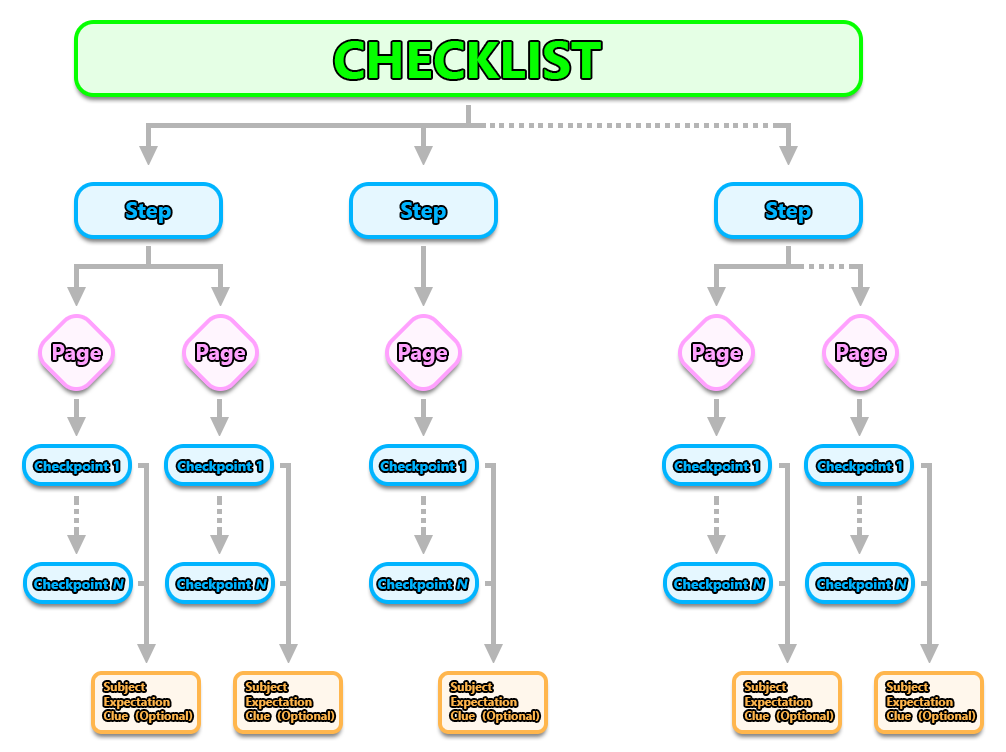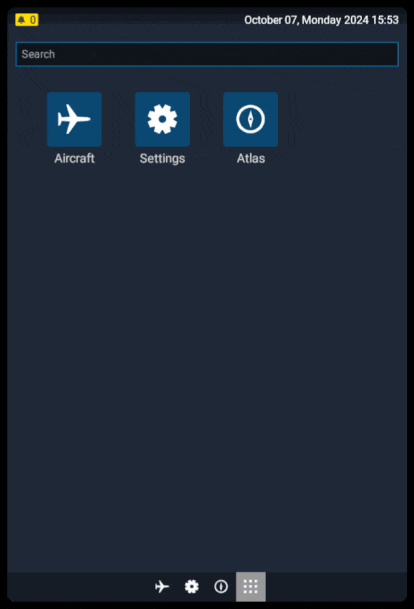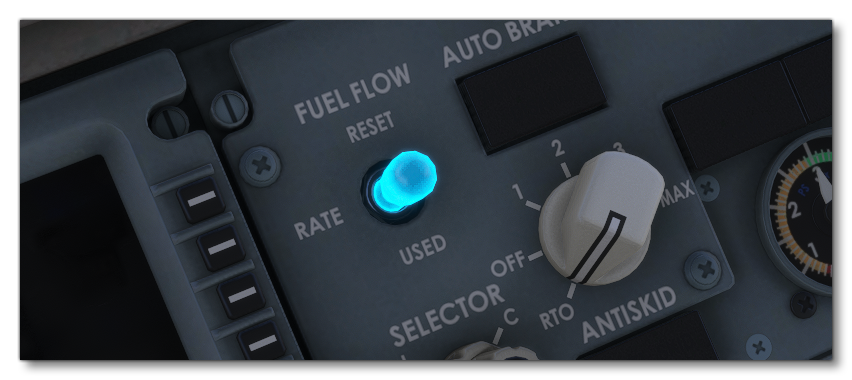CHECKLIST FLOW
A checklist is a list of tasks that should be performed and validated by pilots and aircrew before flying, and its purpose is to improve flight safety by ensuring that no important tasks are forgotten. As such, in Microsoft Flight Simulator 2024, aircraft that you make will also need to have a checklist defined. The important thing to note, however, is that in the simulation checklists aren't just a list of tasks, but are also a teaching aid for new users, since the UI will give helpful hints as to how a checklist task can be performed and completed. This means that users who have no time for (or are not interested in) finding out the technical subtleties of how to operate an aircraft for themselves, will find that the in-sim checklist is an operational abstract of the aircraft handbook, as well as a tool for guiding them interactively inside the cockpit. This makes checklists a very powerful asset that can contribute in attracting casual users into flying more complex aircraft and also raise their interest for aeronautics in general.
Given how important checklists are, in this section we're going to go over how a checklist should flow and look at the information displayed to the user in the EFB, so you have a proper understanding of how the underlying code will work and look.
Overview
Given the complexity of creating a good checklist, it's better to have a good schematic idea of how they function and the following graphic is a good base to start from. It offers a visual representation of the different parts of the checklist and how it should flow:

NOTE: "Steps" do not appear in the UI of the simulation. However, their use is mandatory while creating the checklist XML file. Also note that - as shown above - a "Page" must be part of a "step" and you can include a custom number of "pages" per step.
NOTE: "Checkpoints" can also be grouped in a "Block", which we'll discuss a little further down this page.
So, once a flight is started, the checklist of the selected aircraft is accessible through the EFB by opening the Aircraft Application and going to the Checklists option:

NOTE: Since the EFB is accessible directly from the main menu, it is possible to access and view the checklist for an aircraft without having to launch a flight.
The checklist page displays the following information:

- On the left side, you can find the selector for choosing the level of detail.
- Here is a button to reset the whole checklist (there is a corresponding button on the right to reset a single checklist page).
- This is the list of available pages grouped under three main groups (Preflight, Inflight, Postflight).
- On the right side, the display is occupied with the contents of the currently selected page.
- the number of validated checkpoints, the number of total checkpoints
- This button is only visible if the current page includes facultative blocks and will show extra settings associated with them (see Checkpoint Blocks below) .
- A typical checkpoint, featuring subject and expectation as well as an (optional) clue.
- This button is used to trigger visual helpers - eg: highlights, or camera positions - if they are defined for the checkpoints (see Helpers below).
- This circle can be clicked to flag the associated checkpoint as verified.
Checkpoints
In the simulation, each page of a checklist can be selected to show the different checkpoints associated with it. Each of these checkpoints needs to be completed for the checklist page to be finished. The most important parts to keep in mind when setting up your checkpoints are:
- The Checkpoint itself, which is considered the subject of the user attention.
- The Expectation, which is the action or, respectively, the state that is associated with the subject and that the user is expected to perform, or to check.
- The Clue, which is a short snippet of text designed to help the user complete the checklist by giving more information or context. Note that the clue is optional and should only really be used if it brings added value to the checkpoint (ie: if the checkpoint is obvious - like Throttle with an expectation of Idle - then it's probable that no clue is necessary).
Checkpoint Blocks
Sometimes, a page of checklist might contain a subsection of checkpoints with a title, called a block. This may simply be a convenient way to group together similar checkpoints, or it may signify a part of the checklist that is to be evaluated only under certain conditions, or all together as a whole. For example, some aircraft have a different startup procedure depending on the engine starting temperature (e.g. if the aircraft flew recently, and engines are still warm), so you would have two "blocks": one for a cold startup, and one for a warm startup, and only the checkpoints within the block that is applicable need to be evaluated.
In Microsoft Flight Simulator 2024 using the EFB, blocks can now be of three types:
- Basic: This is the most common of blocks and is used for simple display layouts.
- Facultative: This is a block that requires the user to adjust the page settings before it will be displayed.
- Exclusive: This is a block which is linked to another block on the same page, and is used for synchronizing displayed information within the same page, where only one of multiple options can be used.
NOTE: Blocks can be nested up to two levels in the EFB, ie: checkpoints can be defined in a block, and this block can be placed inside another block, which is directly inside a page. This is currently a limitation of the EFB Aircraft Application itself, and not of the code. Within the code there is technically no limitation for nesting blocks, so you can create your own checklist applications that support a greater depth of block nesting than the default EFB aircraft application.
For more information on block types and how they are set up, please see here:
Helpers
To help the user to find the right instrument to operate, the camera can be moved and the instrument can be highlighted. This help is mainly useful for beginners so they can learn where the instruments are located and how to operate them. For a user to activate this system they simply need to click on the "eye" icon within the EFB Aircraft Application:
![]()
Once this icon is clicked, the UI highlights the instrument in blue and the related camera view is set to focus on the appropriate instrument, button or knob:
